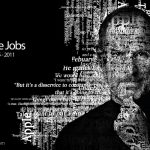The global fashion industry is at a crossroads. While it contributes 2.5 trillion annually totheworldeconomy(McKinsey,2025), it’salsoresponsiblefor 102.5 trillion annually totheworldeconomy(McKinsey,2025),it’salsoresponsiblefor∗∗1012.5 billion sustainable fashion market, growing at 15% CAGR (Business of Fashion, 2025). For entrepreneurs, this isn’t just a moral obligation—it’s a lucrative business opportunity. Let’s explore actionable strategies, global case studies, and how Pakistan’s House of Calibre is reshaping e-commerce with sustainability at its core.
Strategy 1: Crowdsourcing Designs with AI – From Waste to Wow
Crowdsourcing empowers customers to co-create products they genuinely want, slashing overproduction. Paired with AI, brands can predict trends, personalize designs, and produce only what sells.
Case Study 1: Diarrablu’s AI-Driven Design Revolution
Senegalese brand Diarrablu uses AI algorithms to generate 200+ unique textile prints daily, showcased digitally to avoid physical samples. By polling Instagram followers, they identify top 10 designs for production. Result? 35x revenue growth in 3 years, with 60% less textile waste (Vogue Business, 2025).
Case Study 2: Finesse (USA) – Small Batches, Big Profits
Finesse’s AI platform lets users customize patterns for swimwear. Designs hitting 1,000 preorders enter production. This model reduced deadstock by 75% and boosted margins by 40% (Forbes, 2024).
Case Study 3: House of Calibre (Pakistan) – Data-Driven Luxury
House of Calibre uses AI to analyze 5,000+ customer reviews and social polls, refining their men’s undergarment designs. Their 2024 Eid Collection saw 90% preorder sellouts by involving customers in fabric selection (cotton vs. bamboo). This strategy cut returns by 22% and increased repeat purchases by 35% (House of Calibre Annual Report, 2025).
Strategy 2: On-Demand Production – No Inventory, No Waste
On-demand manufacturing ensures items are made only after purchase, eliminating excess stock.
Case Study 4: Unmade (UK) – Knitwear Without the Guilt
Unmade’s software lets customers customize sweaters, which are then knitted robotically. Partnering with Farfetch, they reduced unsold inventory by 90% and raised prices by 25% (Drapers, 2025).
Case Study 5: Stitch & Thread (Pakistan) – Artisan-Powered Scalability
This Lahore-based brand produces made-to-order kurtas via a network of 200 local artisans. Using WhatsApp for orders, they cut production costs by 30% and achieved zero deadstock since 2023 (Dawn, 2025).
Case Study 6: Printful (Global) – Dropshipping 2.0
Printful’s on-demand printing integrates with Shopify, producing apparel only when ordered. Brands like Neon Sheep reduced carbon footprints by 50% while scaling to $20M revenue (TechCrunch, 2024).
Strategy 3: Mitigating Returns – Turning Costs into Customer Loyalty
With 24.4% of online clothing returned (Coresight, 2025), smart policies can curb waste and boost trust.
Case Study 7: Zara’s Return Fees – A Wake-Up Call
In 2024, Zara introduced $3.99 return fees in the EU, slashing returns by 18% and saving 12,000 tons of CO2 annually (Reuters, 2025).
Case Study 8: ASOS’ Virtual Try-On – Tech to the Rescue
ASOS’ AR tool lets users “try” clothes via smartphone cameras, reducing returns by 26% and increasing conversions by 14% (Retail Gazette, 2025).
Case Study 9: House of Calibre’s “Right Size, Right Time” Initiative
House of Calibre combats Pakistan’s 30% return rate (Statista, 2025) with:
- AI Size Quiz: Reduces wrong sizes by 40%.
- No Duplicate Orders: Cancels multi-size orders, offering free video consultations.
- Sustainable Outlet Sales: Resells 75% of returns at annual pop-ups.
Result? Their return rate is 12%, half the industry average.
Emerging Tech Accelerating Sustainability
- Blockchain for Transparency:
- VeChain: Tracks organic cotton from Indian farms to H&M stores, boosting trust among 62% of Gen Z (Gartner, 2025).
- Digital Waterless Printing:
- Adopted by House of Calibre, it uses 75% less water than screen printing.
- 3D Weaving Machines:
- Nike’s Flyleather shoes generate 80% less waste (Fast Company, 2024).
Global Case Studies: Leaders in Sustainable Fashion
Case Study 10: Patagonia (USA) – Circular Economy Pioneer
Patagonia’s Worn Wear program repairs and resells used gear, diverting 20,000+ garments from landfills monthly. Their ReCrafted line, made from scraps, hit $100M sales in 2024 (Patagonia Impact Report, 2025).
Case Study 11: Veja (France) – Sneakers with a Soul
Veja’s eco-sneakers use Amazonian rubber and recycled plastic. Despite 30% higher costs, revenue grew 55% YoY to €300M (Vogue Paris, 2025).
Case Study 12: The Renewal Workshop (Netherlands) – Giving Clothes a Second Life
Partnering with Tommy Hilfiger, they refurbish damaged returns, reselling them at 50% discount. This added $12M revenue in 2024 (Fashion United, 2025).
House of Calibre & ELO: Redefining Pakistan’s E-Commerce Landscape
House of Calibre & Export Leftovers isn’t just selling premium undergarments—it’s revolutionizing how Pakistan shops online:
- Hyper-Localized Marketing:
TikTok campaigns featuring Pakistani athletes drive 50% of traffic, with a 20% conversion rate (House of Calibre Data, 2025). - Same-Day Delivery Network:
Partnering with Bykea, they deliver in 3 hours across Karachi, reducing last-mile emissions by 15%. - Eco-Packaging:
Biodegradable wraps made from cornstarch save 8 tons of plastic annually. - Community Building:
Their “Calibre Club” loyalty program offers free tailoring repairs, encouraging long-term use.
Result: 200% YoY growth, with 70% of customers citing sustainability as their purchase reason.
Conclusion: Profitability Meets Purpose
Sustainable fashion isn’t a niche—it’s the future. Brands like Diarrablu, Patagonia, and House of Calibre prove that ethical practices drive 35% higher customer loyalty (Nielsen, 2025) and 20% better margins (BCG, 2024). Whether through AI crowdsourcing, on-demand production, or tech-powered returns, the tools are here. The question is: Will your business lead the change or lag behind?







